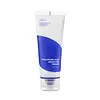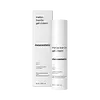What's inside
What's inside
 Key Ingredients
Key Ingredients

 Benefits
Benefits

 Concerns
Concerns

 Ingredients Side-by-side
Ingredients Side-by-side

Water
Skin ConditioningMethylpropanediol
SolventCoco-Caprylate/Caprate
Emollient1,2-Hexanediol
Skin ConditioningGlycerin
HumectantBiosaccharide Gum-1
HumectantBetaine
HumectantAmmonium Acryloyldimethyltaurate/Vp Copolymer
Trehalose
HumectantSodium Hyaluronate
HumectantHydrolyzed Hyaluronic Acid
HumectantCentella Asiatica Extract
CleansingPolygonum Cuspidatum Root Extract
AntioxidantScutellaria Baicalensis Root Extract
AstringentCamellia Sinensis Leaf Extract
AntimicrobialPortulaca Oleracea Extract
Skin ConditioningGlycyrrhiza Glabra Root Extract
BleachingHouttuynia Cordata Extract
Skin ConditioningRosmarinus Officinalis Leaf Extract
AntimicrobialChamomilla Recutita Flower Extract
MaskingSodium Hyaluronate Crosspolymer
HumectantSodium PCA
HumectantSqualane
EmollientIsostearyl Alcohol
EmollientButylene Glycol Cocoate
EmulsifyingCetearyl Olivate
Sorbitan Olivate
EmulsifyingHyaluronic Acid
HumectantHydrolyzed Jojoba Esters
Skin ConditioningHydrogenated Olive Oil Unsaponifiables
EmollientButylene Glycol
HumectantHydrolyzed Sodium Hyaluronate
Skin ConditioningAllantoin
Skin ConditioningXanthan Gum
EmulsifyingEthylcellulose
Propanediol
SolventPhenyl Trimethicone
Skin ConditioningPentylene Glycol
Skin ConditioningEthylhexylglycerin
Skin ConditioningWater, Methylpropanediol, Coco-Caprylate/Caprate, 1,2-Hexanediol, Glycerin, Biosaccharide Gum-1, Betaine, Ammonium Acryloyldimethyltaurate/Vp Copolymer, Trehalose, Sodium Hyaluronate, Hydrolyzed Hyaluronic Acid, Centella Asiatica Extract, Polygonum Cuspidatum Root Extract, Scutellaria Baicalensis Root Extract, Camellia Sinensis Leaf Extract, Portulaca Oleracea Extract, Glycyrrhiza Glabra Root Extract, Houttuynia Cordata Extract, Rosmarinus Officinalis Leaf Extract, Chamomilla Recutita Flower Extract, Sodium Hyaluronate Crosspolymer, Sodium PCA, Squalane, Isostearyl Alcohol, Butylene Glycol Cocoate, Cetearyl Olivate, Sorbitan Olivate, Hyaluronic Acid, Hydrolyzed Jojoba Esters, Hydrogenated Olive Oil Unsaponifiables, Butylene Glycol, Hydrolyzed Sodium Hyaluronate, Allantoin, Xanthan Gum, Ethylcellulose, Propanediol, Phenyl Trimethicone, Pentylene Glycol, Ethylhexylglycerin
Water
Skin ConditioningIsodecyl Neopentanoate
EmollientTranexamic Acid
AstringentNiacinamide
SmoothingJojoba Esters
EmollientGlycerin
HumectantIsostearyl Alcohol
EmollientButylene Glycol
HumectantPolymethylsilsesquioxane
Sodium Citrate
BufferingHelianthus Annuus Seed Wax
Skin ConditioningButylene Glycol Cocoate
EmulsifyingCaprylic/Capric Triglyceride
MaskingIsononyl Isononanoate
EmollientPolyacrylate Crosspolymer-6
Emulsion StabilisingLactic Acid
BufferingKojic Acid
AntioxidantArgania Spinosa Kernel Oil
EmollientSalicylic Acid
MaskingAminoethylphosphinic Acid
Skin ConditioningGlycogen
HumectantAcetyl Glycyl Beta-Alanine
Skin ConditioningAcacia Decurrens Flower Wax
EmollientPlankton Extract
Skin ConditioningPolyglycerin-3
HumectantPolyacrylate-13
Dimethicone
EmollientPolyisobutene
Ethylhexylglycerin
Skin ConditioningSorbitan Isostearate
EmulsifyingEthylcellulose
Polysorbate 20
EmulsifyingSodium Hydroxide
BufferingCitric Acid
BufferingSodium Metabisulfite
AntioxidantBHT
AntioxidantDisodium EDTA
Phenoxyethanol
PreservativeParfum
MaskingWater, Isodecyl Neopentanoate, Tranexamic Acid, Niacinamide, Jojoba Esters, Glycerin, Isostearyl Alcohol, Butylene Glycol, Polymethylsilsesquioxane, Sodium Citrate, Helianthus Annuus Seed Wax, Butylene Glycol Cocoate, Caprylic/Capric Triglyceride, Isononyl Isononanoate, Polyacrylate Crosspolymer-6, Lactic Acid, Kojic Acid, Argania Spinosa Kernel Oil, Salicylic Acid, Aminoethylphosphinic Acid, Glycogen, Acetyl Glycyl Beta-Alanine, Acacia Decurrens Flower Wax, Plankton Extract, Polyglycerin-3, Polyacrylate-13, Dimethicone, Polyisobutene, Ethylhexylglycerin, Sorbitan Isostearate, Ethylcellulose, Polysorbate 20, Sodium Hydroxide, Citric Acid, Sodium Metabisulfite, BHT, Disodium EDTA, Phenoxyethanol, Parfum
 Reviews
Reviews

Ingredients Explained
These ingredients are found in both products.
Ingredients higher up in an ingredient list are typically present in a larger amount.
Butylene Glycol (or BG) is used within cosmetic products for a few different reasons:
Overall, Butylene Glycol is a safe and well-rounded ingredient that works well with other ingredients.
Though this ingredient works well with most skin types, some people with sensitive skin may experience a reaction such as allergic rashes, closed comedones, or itchiness.
Learn more about Butylene GlycolButylene Glycol Cocoate isn't fungal acne safe. It can be bad for dry skin.
We don't have a description for Ethylcellulose yet.
Ethylhexylglycerin (we can't pronounce this either) is commonly used as a preservative and skin softener. It is derived from glyceryl.
You might see Ethylhexylglycerin often paired with other preservatives such as phenoxyethanol. Ethylhexylglycerin has been found to increase the effectiveness of these other preservatives.
Glycerin is already naturally found in your skin. It helps moisturize and protect your skin.
A study from 2016 found glycerin to be more effective as a humectant than AHAs and hyaluronic acid.
As a humectant, it helps the skin stay hydrated by pulling moisture to your skin. The low molecular weight of glycerin allows it to pull moisture into the deeper layers of your skin.
Hydrated skin improves your skin barrier; Your skin barrier helps protect against irritants and bacteria.
Glycerin has also been found to have antimicrobial and antiviral properties. Due to these properties, glycerin is often used in wound and burn treatments.
In cosmetics, glycerin is usually derived from plants such as soybean or palm. However, it can also be sourced from animals, such as tallow or animal fat.
This ingredient is organic, colorless, odorless, and non-toxic.
Glycerin is the name for this ingredient in American English. British English uses Glycerol/Glycerine.
Learn more about GlycerinA type of fatty alcohol. Fatty Alcohols are most often used as an emollient or to thicken a product. They are usually derived from natural fats and oils and therefore do not have the same drying or irritating effect as traditional alcohols.
Water. It's the most common cosmetic ingredient of all. You'll usually see it at the top of ingredient lists, meaning that it makes up the largest part of the product.
So why is it so popular? Water most often acts as a solvent - this means that it helps dissolve other ingredients into the formulation.
You'll also recognize water as that liquid we all need to stay alive. If you see this, drink a glass of water. Stay hydrated!
Learn more about Water